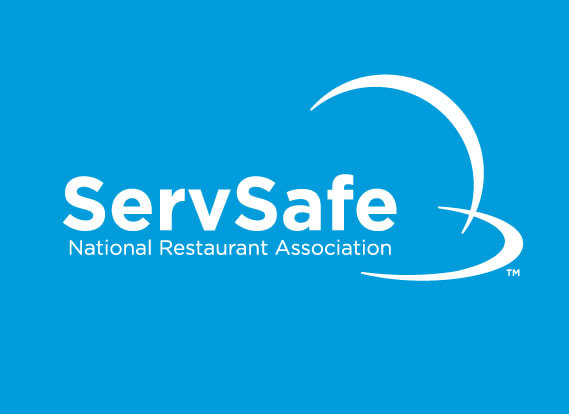Navigating the Requirements for the ServSafe Alcohol Certification: What to Anticipate
Navigating the Requirements for the ServSafe Alcohol Certification: What to Anticipate
Blog Article
Efficient and fast Food Trainers Training for Qualification
In the food solution industry, the importance of quick and reliable food handlers training for qualification can not be overstated. Ample training makes certain that staff members are educated about vital food safety methods, ultimately safeguarding public health and wellness and improving operational performance.
Significance of Food Safety And Security Training
Although food safety and security training might feel like a basic demand for food handlers, its relevance can not be overemphasized. The food market is inherently susceptible to a variety of health and wellness risks, consisting of foodborne ailments that can emerge from improper handling, storage space, and prep work techniques. Efficient training furnishes food handlers with the understanding needed to mitigate these dangers, consequently ensuring the safety and security and top quality of the food being offered.
Additionally, food safety training promotes a society of responsibility and persistance amongst personnel. When workers comprehend the important role they play in preserving hygiene standards, they are most likely to stick to protocols and report prospective hazards. This aggressive strategy not just shields customers however likewise enhances the track record of the facility.
Hence, investing in comprehensive food safety training is not just a legal procedure but a tactical decision that safeguards public wellness and sustains business practicality. Inevitably, the importance of food safety and security training extends beyond private duty; it is a fundamental component that supports the stability of the whole food supply chain.
Key Parts of Training Programs

Firstly, the training web content should cover crucial subjects such as cross-contamination, appropriate food storage, temperature level control, and individual hygiene methods (servsafe alcohol). This ensures that food handlers are well-versed in the essential principles of food security
Secondly, the training techniques utilized in training programs play a crucial role in improving understanding and retention. Using a mix of interactive techniques, such as hands-on demonstrations, group discussions, and multimedia discussions, can deal with diverse learning designs and boost engagement.
Finally, durable assessment techniques are essential for examining the performance of the training program. Executing quizzes, practical assessments, and real-world situations not just assists in strengthening expertise however also ensures that food trainers can apply what they have discovered in their day-to-day jobs.
Benefits of Fast Certification
Rapid qualification in food handling supplies many advantages, specifically in today's busy food industry. One of the most significant advantages is the ability to quickly equip staff members with necessary understanding and abilities, guaranteeing compliance with health and wellness regulations. This accelerates the onboarding procedure, allowing dining establishments and food service facilities to preserve procedures without lengthy hold-ups.
In addition, quick qualification programs are commonly more obtainable, suiting a diverse range of discovering styles and routines. These programs generally make use of engaging approaches such as interactive workshops or online components, which can enhance retention of vital details.

Additionally, rapid certification can lower the danger of foodborne ailments, which can substantially affect a business's track record and profits. By ensuring that all employees are promptly trained and accredited, facilities can promote a culture of food security, eventually profiting both the company and its consumers. Generally, quick qualification represents a calculated benefit in a competitive sector.
Tips for Effective Implementation

Effective implementation of food trainer training programs is vital for making the most of the advantages of fast qualification. To attain this, organizations need to start by plainly defining their training goals and straightening them with governing demands. This guarantees that all needed subjects are covered thoroughly.
Making use of technology can simplify the training procedure. On-line components enable flexible organizing, allowing employees to complete training at their convenience while minimizing downtime. Incorporating interactive components, such as tests and scenario-based knowing, can boost engagement and retention of details.
It is likewise vital to establish a structured timeline for training sessions, permitting appropriate time for both direction and useful application - servsafe certifications. This may include hands-on demos of correct food dealing with strategies, which are important for reinforcing understanding
Normal interaction with staff about training assumptions and results fosters a society of accountability and urges participation. Last but not least, offering accessibility to extra sources and support materials can improve understanding and address any type of sticking around questions.
Examining Educating Effectiveness
Examining the effectiveness of food handler training programs is vital for making certain that workers not just obtain the essential understanding yet also apply it in their daily jobs. A detailed assessment process can include several methods, consisting of pre- and post-training assessments, direct monitorings of food taking care of methods, and worker feedback surveys.
Pre- and post-training evaluations aid to measure the knowledge gained by workers, offering measurable data that can show the effectiveness of the training material. servsafe. These evaluations need to cover critical topics such as food safety policies, personal health standards, and cross-contamination prevention
Direct monitorings of staff members in their job settings are necessary for analyzing the functional application of discovered skills. Observations enable trainers and administration to recognize areas where staff members may have a hard time and need added assistance or re-training.
Additionally, gathering feedback through surveys from participants can offer understandings right into the training's importance, pacing, and overall performance. Involving workers in this comments procedure can promote a society of continuous you could try these out improvement.
Final Thought
In verdict, fast and effective food trainers educating for accreditation is important for preserving high food safety standards. Continuous assessment of training effectiveness even more ensures that food security methods stay current and reliable in a dynamic sector atmosphere.
In the food service sector, the importance of fast and efficient food handlers educating for qualification can not be overstated.Although food security training may seem like a fundamental requirement for food trainers, its importance can not be overstated. Reliable training furnishes food trainers with the expertise essential to mitigate these threats, thereby guaranteeing the safety and security and top quality of the food being served.
Ultimately, the significance of food safety training expands beyond specific obligation; it is a foundational element that click this sustains the stability of the entire food supply chain.
In verdict, quick and reliable food handlers educating for Visit Your URL accreditation is important for keeping high food safety and security requirements.
Report this page